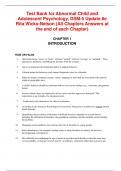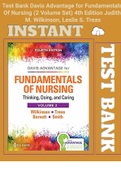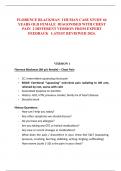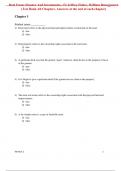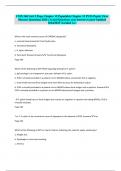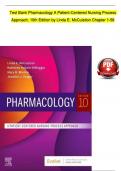Prüfung
Test Bank For Abnormal Child and Adolescent Psychology, DSM-5 Update 8th Edition By Rita Wicks-Nelson || All Chapters 2024 || Latest & Updated Version A+
- Kurs
- Hochschule
- Book
Test Bank For Abnormal Child and Adolescent Psychology, DSM-5 Update 8th Edition By Rita Wicks-Nelson || All Chapters 2024 || Latest & Updated Version A+ Bank for Abnormal Child and Adolescent Psychology, DSM-5 Update 8e Rita Wicks-Nelson (All Chapters Answers at the end of each Chapter) CHAPT...
[ Mehr anzeigen ]
